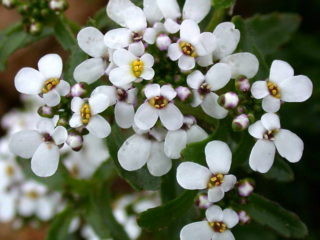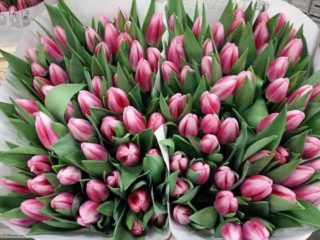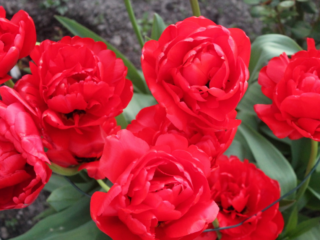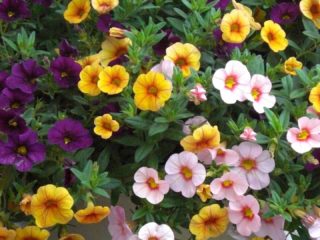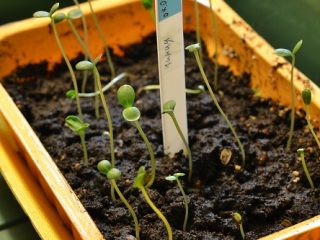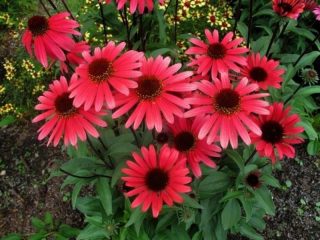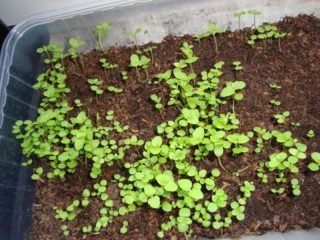Content
Bellflower is a fairly common plant that can be found not only in garden plots, but also in natural conditions. It got its name from the unusual shape of the flower calyx. And, despite the fact that the genus itself has more than 200 species, there are also flowers that look like bells in structure and appearance.

The bell grows throughout the temperate region, as do its counterparts.
What are the bell-like flowers called?
The bell itself is a herbaceous plant of the Campanulaceae family. Although this flower is more classified as a wild one, it is successfully grown in gardens. In addition, there are many similar in appearance plants that have a domed flower shape. These include representatives of the Bubenchikov and Ostrovsky family. Some species of the Gentian family can also be added here.
Brugmansia
Brugmansia is a very unusual shrub plant with a treelike trunk, known in the literature as the “intoxicating tree”. It is popularly referred to as "angelic trumpets" because of the beautiful hanging flowers.
Brugmansia is grown as an ornamental plant in the Caucasus and the Crimean coast, in other regions it is not widespread, since it is thermophilic and in colder climates may not survive the winter. In nature, it can only be found in South America.

Brugmansia, despite its beautiful flowers, is a poisonous plant
The decorative type of Brugmansia reaches a height of no more than 2 m, in contrast to the wild one, which can grow up to 5 m. The flowers are more like a "gramophone" in shape, 20-30 cm in length and up to 15 cm in diameter. Their color can be yellow, pink or white, and there are also options with a gradient color. The aroma is pleasant and especially felt in the evening.
Hyacintoides
Hyacintoides is a tall flower that looks like a bell. It is also called wild hyacinth. Under natural conditions, it is found in almost any area (in forests, in the fields, in the steppes), and it is also often planted in gardens and in personal plots.

Hyacintoides is an early flowering plant that pleases with its flowering throughout the month
The flower itself is a bulbous perennial, characterized by unpretentious care. It reaches a height of up to 50 cm, the peduncle is single and at the same time it can be from 30 to 40 cm.The leaf plates are located next to the root and up to 30 cm long.The flowers are small, up to 2.5 cm in diameter, tubular-bell-shaped, drooping , are arranged in 4-10 buds in a group. Their color can be white, pink, lilac or blue.
Adenophora
Adenophora also belongs to the tall counterparts of the bell, moreover, it is its close relative. The people refer to this flower as "Bell".
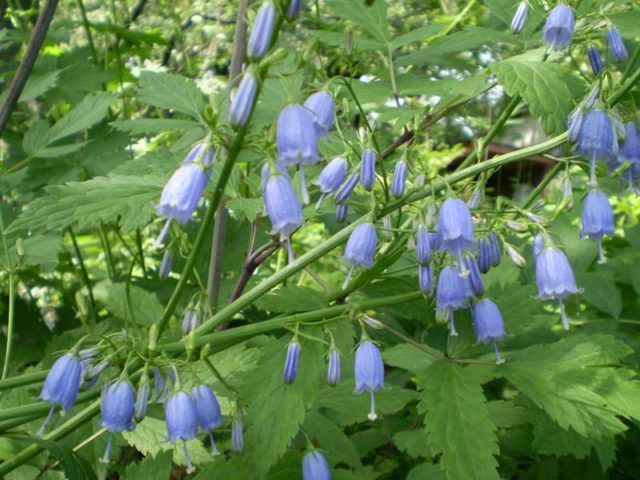
The adenophore, in contrast to the bell, has a longer pistil
The herbaceous plant Adenophora can reach a length of up to 1.5 m. The root system is pivotal, powerful enough, capable of penetrating deep into the soil. The stem is erect, the green mass is whorled. The flowers are funnel-shaped or bell-shaped, the color is classic: purple, blue and white. Collected buds in racemose or paniculate inflorescences.
Dope
Datura is a white flower that looks like bells. An annual plant with beautiful large buds, it begins to bloom from June to September.
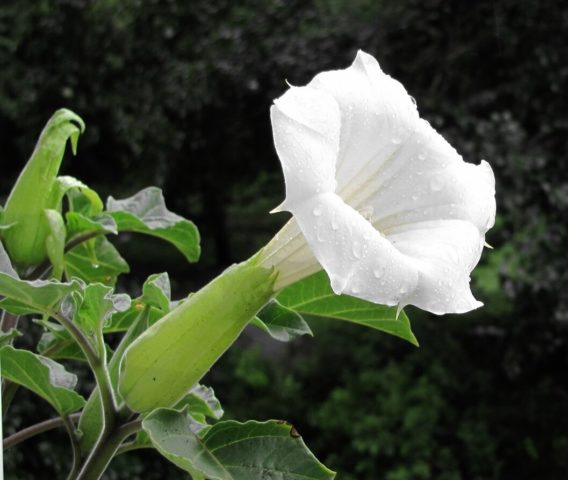
Datura, despite its beautiful inflorescences, has an unpleasant intoxicating aroma
The plant is more attributed to a weed, since its toxicity scares away gardeners. The stem is straight, forked-branched in the upper part. Leaves are medium in size, ovoid with jagged teeth at the edges. The flowers are large enough, tubular-funnel-shaped, located one at a time in the forks of the stem.
Codonopsis
Codonopsis is a climbing perennial that can decorate a fence or fence quite well. The garden flower itself looks like a bell only in the shape of a bud.

Codonopsis, after planting in open ground, blooms already in the first year of life.
The stems of the plant are glabrous, curly and long enough, can grow up to 2 m in length. The main root is radish, the system itself is powerful and well developed. The leaf plates are sessile, large, broadly lanceolate, up to 8 cm in length.
The flower is single, apical and has a different color depending on the variety (sometimes bluish-green, slightly yellow with a purple edge). The aroma during flowering is unpleasant.
Aquilegia
Aquilegia, also popularly known as "eagle", "boots" or "catchment", belongs to the buttercup family. In nature, there are about 120 species of this plant, of which only 35 are grown as an ornamental crop.

In the gardens, aqualegia is cultivated mainly with hybrid varieties.
Digitalis
The foxglove is a very impressive plant, which grows to full growth already in the second year of life. Initially, after planting in open ground for the first year, the seedlings will be low, no more than 30 cm, after which this figure will triple, reaching 1.3-1.5 m.

Foxglove stems are very tough with virtually no lateral shoots
The leaf plates are large enough with a relief surface. The top of the sheet is glossy, and on the reverse side it has a thick fleecy coating.
The peduncle is presented in the form of a brush of collected large bell-shaped buds, the color of which can be white, purple or pink with clearly visible specks inside.
Galanthus
Galanthus, also referred to as "snowdrop", belongs to the Amaryllis family. It is a perennial bulbous plant, a feature of which is its early appearance and flowering.
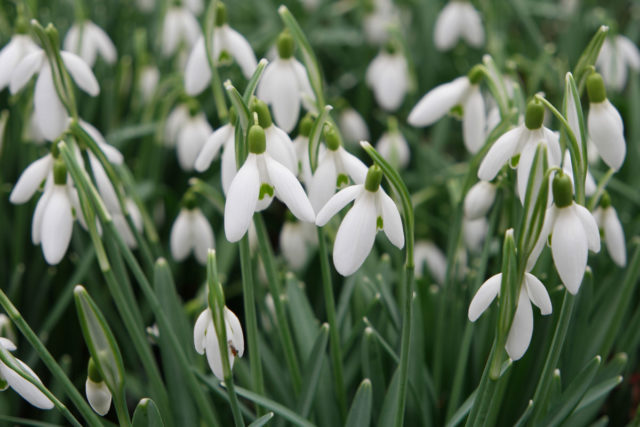
Under natural conditions, galanthus can be found along river banks, on forest edges and in meadows.
Galanthus is a white flower, similar to a bell, has thin long leaf plates and, at first glance, a fragile stem no more than 15 cm in height. Despite this, he is considered to be quite hardy and unpretentious. Galanthus blooms immediately after the snow melts, approximately in February-March.
Grouse
The hazel grouse is another peculiar twin of the bell, the scientific name of which sounds like Fritillaria, and it belongs to the Liliaceae family.
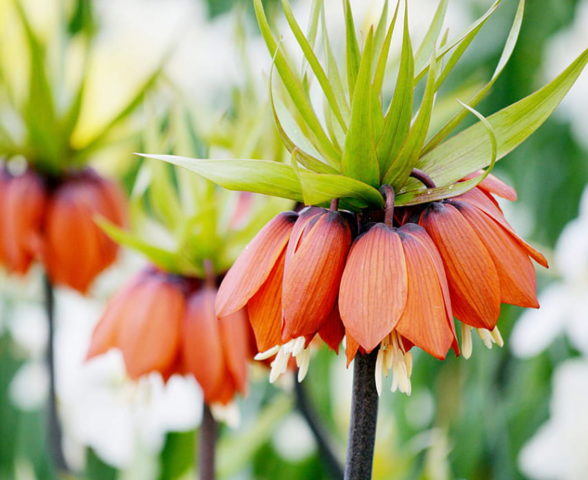
Because of its peculiar appearance, hazel grouse is also called the "paradise tree"
The most attractive species of the entire varietal variety is the imperial hazel grouse. The stem of this plant is thick, the flowers are single or collected in a brush in the form of an umbrella. Thin, oblong leaves rise above the inflorescence.
Cyanantus
Cyanthus is a blue or pale blue flower that not only looks like a bell, but also belongs to this family. It is not widely used as a garden culture.
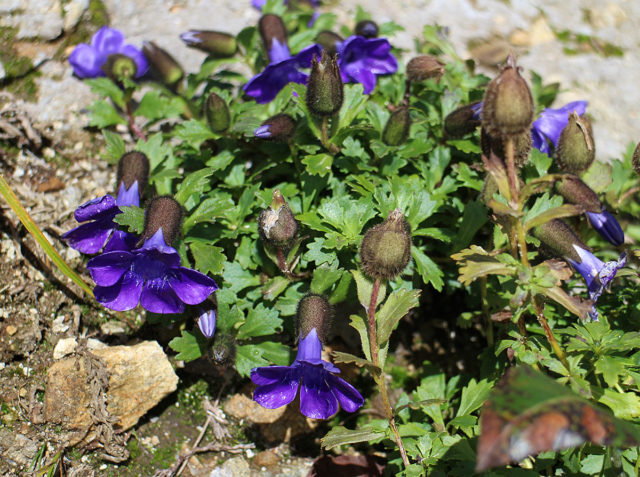
Cyanantus can be considered the shortest representative of the Kolokolchikov family.
This plant is characterized by small shoots growing by 30-40 cm. The leaf plates are small, narrowed at the base and pointed at the top. During the summer, the leaves change from green to white.
Gentian
The gentian is another blue bell-shaped flower. It belongs to the Gentian family. In total, there are about 400 species in nature, 90 of which are found in selection.
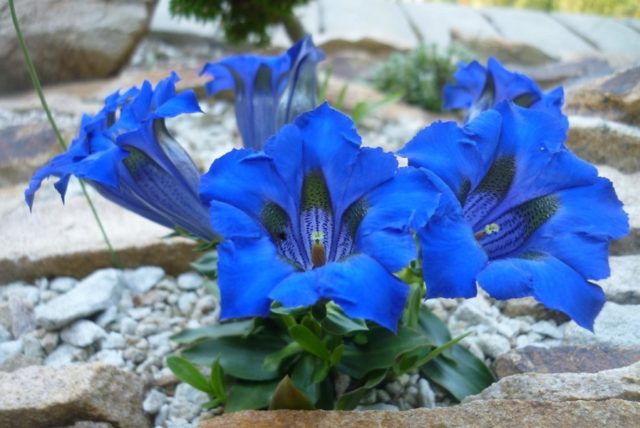
Wild gentian species differ significantly from garden species, not only in terms of parameters, but also in terms of flowering.
The root system is shallow, the stems are erect and usually short. Flowers, depending on the variety, can be single or collected in a group at the top of the stem. In addition to the blue, blue and white colors of the buds, you can also find flowers of yellow color.
Shirokolokolchik
Another interesting bell-like flower is the shirokokolokolka, also called platycodon. It is presented as a small, up to 60 cm in height, lush bush with decorative green mass.
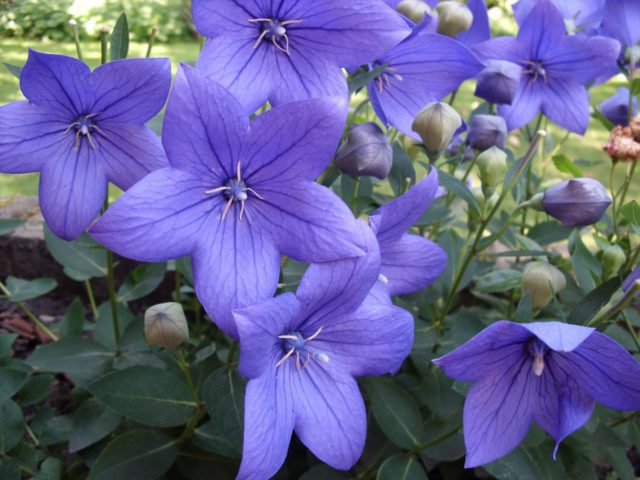
Shirokolokolchik flowers are considered its main feature.
The plant is late flowering, perennial and highly decorative. Its buds have an unusual shape, which, when it reaches 8 cm, transforms into a round cup. The color palette is varied, ranging from light blue to pink.
Kobei
Kobei is a bushy curly flower, similar to a bell, belongs to the Cyanus family. The length of its stems can reach up to 6 m in length and even more. Leaves are complex-pinnate, three-lobed, alternating on the stem. At the ends of the shoots, they are transformed into whiskers, allowing the plant to securely anchor itself to the support.
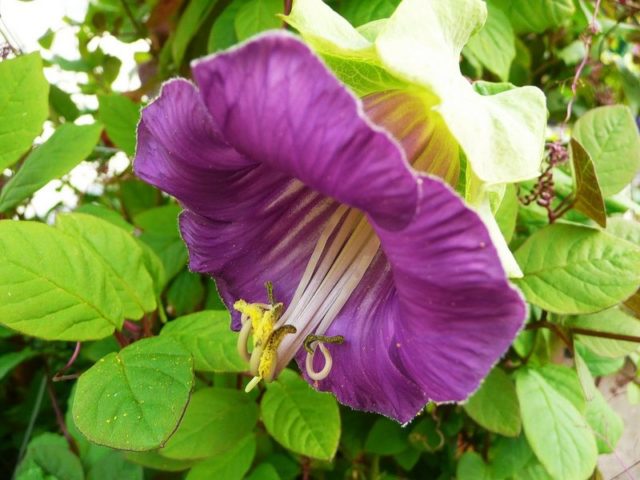
Kobei as a decorative flower is grown as an annual
The flowers are quite large (8 cm in diameter) in the form of bells. The stamens and pistils are strongly protruding. The buds grow singly or in a group of 2-3, they are located on long peduncles growing from the axils of the leaves.
Gloxinia
An interesting and very beautiful indoor flower that looks like a bell is called Gloxinia. It belongs to the Gesneriaceae family, and it is a tuberous perennial.

Most gloxinia species are presented in two colors
The flower itself has short shoots and rather large leaf plates of a rich green color. The surface of the leaves, like the buds, is velvety. Bell-shaped flowers with a diameter of 7 cm and a length of about 5 cm.
Symphyandra
Symphiandra is a little-known but very bell-like herb that, despite being a perennial, is grown in gardens as a biennial.

All types of Symphiandra are suitable for growing for decorative purposes on rocky ground
The bush is tall and spreading, reaching about 60 cm in height. The leaf plates have a slightly elongated shape and are rarely located. The inflorescences are drooping, collected in spike-shaped brushes. The buds are medium in size, light in color.
Lobelia
Lobelia is a home garden flower that only slightly resembles a bell on close inspection of the shape of the inflorescences.
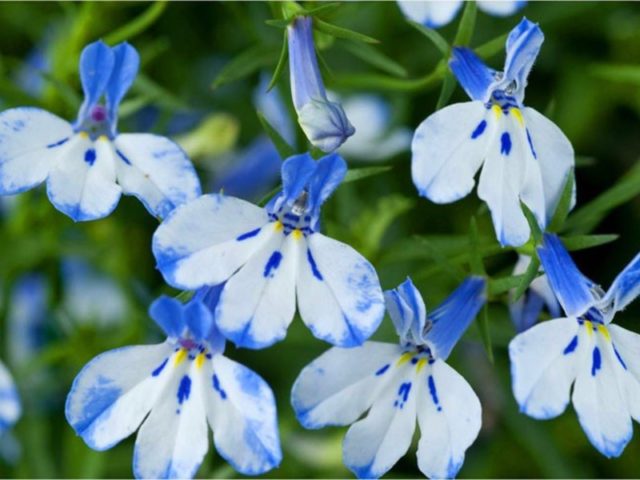
The color of lobelia flowers directly depends on the variety.
Under natural conditions, lobelia grows as a perennial shrub, but in gardens it is grown mostly as an annual. The plant itself is a compact spherical bush of small size, not exceeding 20 cm in height. The shoots are very slender and start branching at the base. The leaves are arranged alternately, small in size. The flowers are two-lipped axillary, about 2 cm in diameter.
Ostrovsky
Ostrovsky is a very unusual representative of the Kolokolchikov family, listed in the Red Book. In gardens, the plant is rarely cultivated, since it is slow-growing.
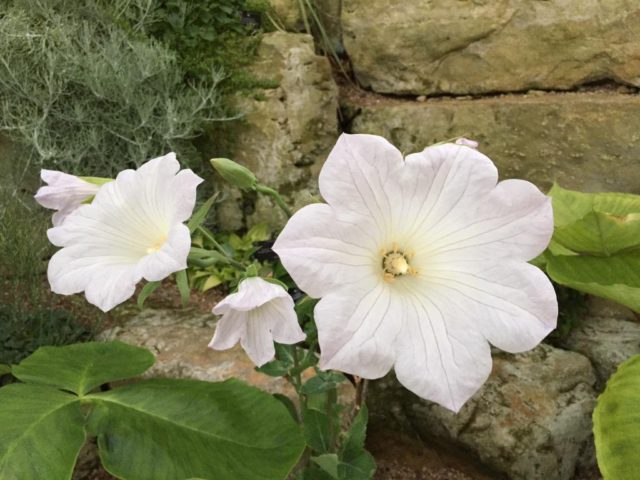
After seed germination, Ostrovsky blooms in 4-5 years
Ostrovsky has a bare stem that grows up to 1-1.8 m in length. Leaves are oblong-ovoid, arranged in whorls of 2-5 pcs. in each. The inflorescence looks like a panicle, which contains up to 30 large white or light blue flowers on a long peduncle.
Eustoma
Eustoma is a very attractive flower with purple or bicolor flowers, similar to bells.
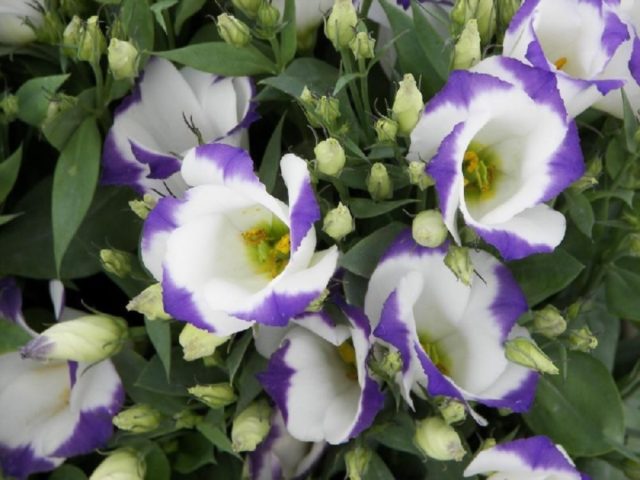
In unopened form, eustoma buds are similar to roses, and their oblong shape resembles bells
Plants reach up to 30 cm in height, and some indoor species can even grow up to 70 cm. The stems are powerful and branched from the middle, so the bush seems voluminous. The leaves are gray, with a smooth waxy surface. Flowers are simple or double, sometimes up to 8 cm in diameter.
Conclusion
Flowers that look like bells are a whole encyclopedia. All of them seem to have similar buds in shape, yet they are unique and inimitable. And most of these plants can become a real garden decoration, delighting with their magnificent flowering.

